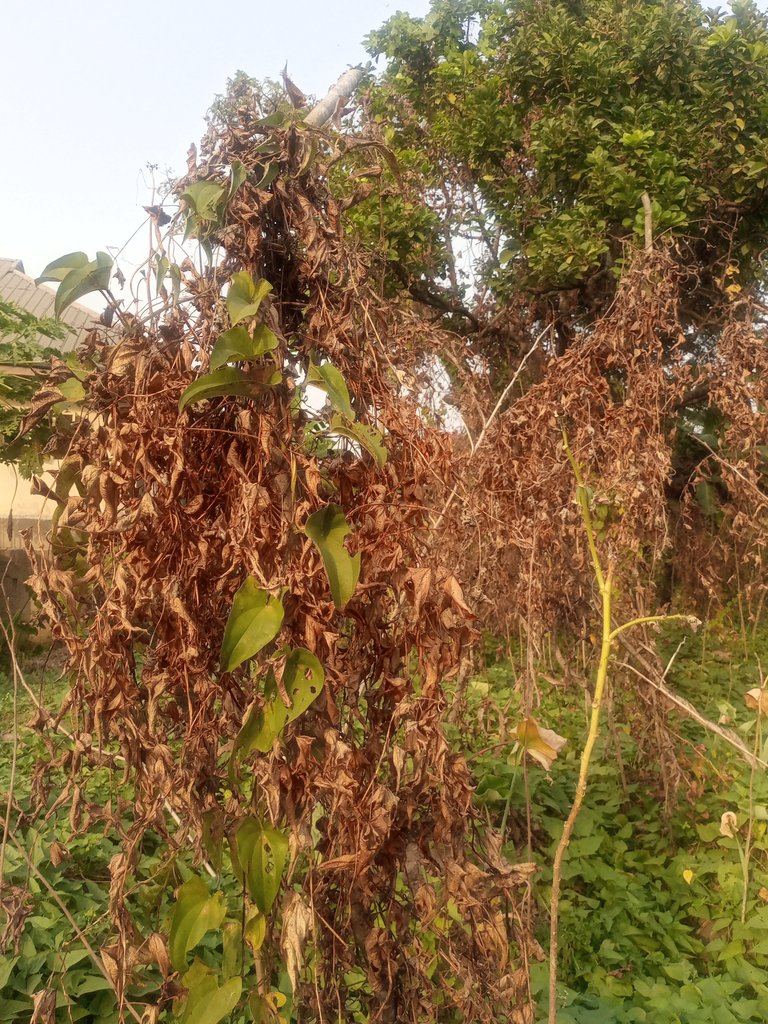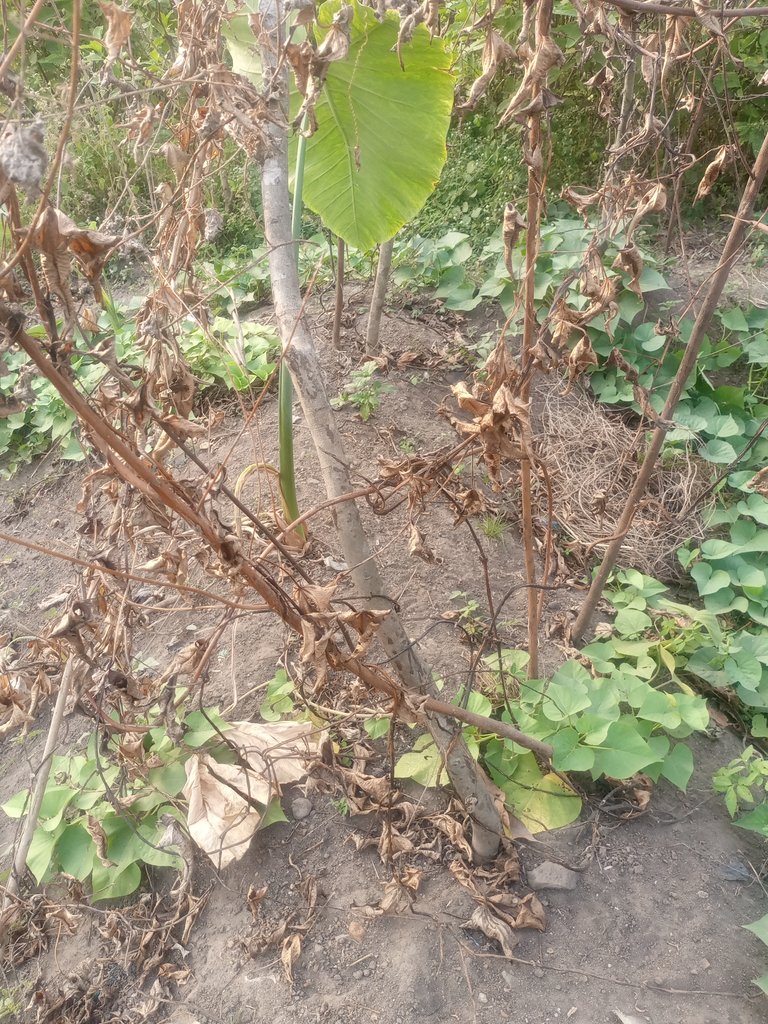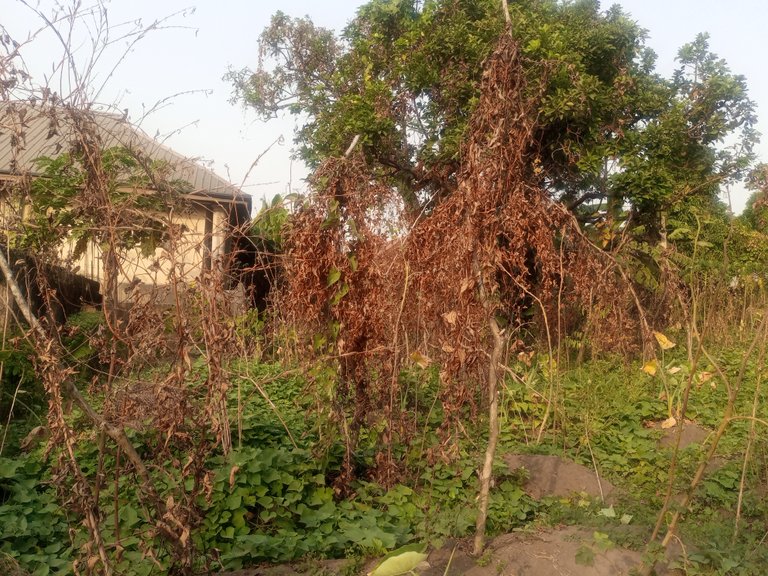Yam is among my best food and I am of aware that most African men and women couldn't survive without eating the food. Africa loves energy given food which yam is highly included. The food acceptance in Africa is what makes the demand very high and profitable for farmers.

For years I have been planting so many agricultural vegetables, crops, and fruits, I have seen that most farmers are encountered with the challenge of planting and harvesting yam at the wrong season. When yam is planted at the wrong season it'll surely be affected and will not grow.

The best season to plant yam if you wish to get the best results is between February and March. This is usually the period rain will likely be kicking off. How I measure when rain will be kicking off in every year is following the third drop of the rain in every February. This will give me the courage to plant my yam before the main rain will start. When I plant yam and rain follows, I usually gives my yam upper hand to produce big yam for harvesting.

If I am to plant my yam before the main raining season, I usually start my planting from swampy areas. The yam which I'll be planting can be surviving from the little water from the area before the main raining season. The only challenge which I usually encounter planting my yam between February is that the land is usually very strong to cultivated thereby making the cost for laborers very high.
Anytime I am done planting my yam and it's due for harvesting. I usually allows it to stay through harmmattan season. This will make my yam to be very strong and good for eating. Years ago when I entered farming newly, I usually plant my yam between February and because of my early planting, my yam usually mature for harvesting early when other farmers are planting. Because my yam mature very early, I usually harvest them immediately. From that February I'll plant the yam before August I'll be harvesting them.
Of course August is within the axis of rainy season. Infact, it's the main time for heavy rain to kick off within the year. When I harvested my yam within this period, I usually see that the yam is usually not mature. Even when harvesting them, many will be cutting to the soil. When cooking, many will scatter to the pot. When eating, it'll be very soft to the mouth. I have also seen through my experience that when one ear yam not well mature, the person may have a runny stomach thereby purging.

After so many experiences of harvesting my yam wrongly, I later learned that the best time to allow yam to mature well is during the harmmattan season. I now allow my yam to reach December or January been in the soil. As my yam remain inside the soil for many harmmattan months, the drying of the weather will make the yam inside the soil to be mature and strong. If such yam is harvested and eating, surely the demand will keep coming to you.

My yam tubes will even be showing me signs that they're due for harvesting during the harmmattan season. I will make sure that the yam stems and leaves are properly dried before I'll be able to harvest my yam.
Spanish Language Translation
El ñame es uno de mis mejores alimentos y soy consciente de que la mayoría de los africanos y africanas no podrían sobrevivir sin comerlo. A África le encantan los alimentos energéticos, entre los que destaca el ñame. La aceptación del alimento en África es lo que hace que la demanda sea muy alta y rentable para los agricultores.

Durante años he plantado muchas hortalizas, cultivos y frutas, y he visto que la mayoría de los agricultores se enfrentan al reto de plantar y cosechar ñame en la estación equivocada. Cuando el ñame se planta en la temporada equivocada, seguramente se verá afectado y no crecerá.

La mejor época para plantar ñame si se quieren obtener los mejores resultados es entre febrero y marzo. Suele ser el periodo en el que es más probable que empiece a llover. La forma en que yo mido cuándo empieza a llover cada año es a partir de la tercera gota de lluvia de febrero. Así me animo a plantar el ñame antes de que empiece a llover. Cuando planto el ñame y la lluvia le sigue, normalmente le doy ventaja a mi ñame para que produzca ñame grande para la cosecha.

Si voy a plantar mi ñame antes de la temporada principal de lluvias, suelo empezar mi plantación en zonas pantanosas. El ñame que voy a plantar puede sobrevivir con la poca agua de la zona antes de la temporada principal de lluvias. El único problema que suelo encontrar al plantar el ñame en febrero es que la tierra es muy dura de cultivar, por lo que el coste de la mano de obra es muy elevado.
Cuando termino de plantar el ñame y llega el momento de cosecharlo. Suelo dejar que pase la temporada de harmmattan. De este modo, el ñame estará muy fuerte y se podrá comer bien. Hace años, cuando empecé a cultivar, solía plantar el boniato en febrero y, debido a mi plantación temprana, el boniato maduraba antes para ser cosechado cuando otros agricultores estaban plantando. Como mi ñame madura muy pronto, suelo cosecharlo inmediatamente. A partir de ese febrero planto el ñame y antes de agosto lo cosecho.
Por supuesto, agosto está dentro del eje de la temporada de lluvias. De hecho, es la época en la que más llueve durante el año. Cuando cosecho mi ñame dentro de este periodo, suelo ver que el ñame no suele estar maduro. Incluso al cosecharlos, muchos se caen al suelo. Al cocinarlos, muchos se esparcen por la olla. Al comer, será muy suave a la boca. También he visto a través de mi experiencia que cuando un ñame no bien madura, la persona puede tener un estómago que moquea por lo tanto la purga.

Después de tantas experiencias de cosechar mal mi ñame, más tarde aprendí que el mejor momento para dejar que el ñame madure bien es durante la temporada de harmmattan. Ahora dejo que el ñame llegue a diciembre o enero en la tierra. Como mi ñame permanece en el suelo durante muchos meses de harmmattan, el secado del clima hará que el ñame dentro del suelo madure y sea fuerte. Si el ñame se cosecha y se come, seguro que la demanda seguirá llegando a usted.

Mis tubos de ñame incluso me mostrarán señales de que están a punto de cosecharse durante la temporada de harmmattan. Me aseguraré de que los tallos y las hojas del ñame estén bien secos antes de poder cosecharlo.